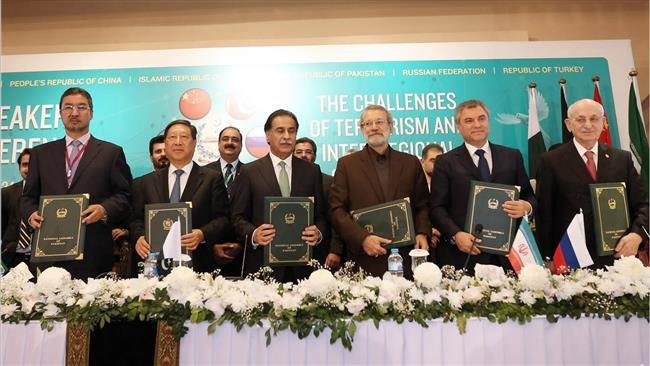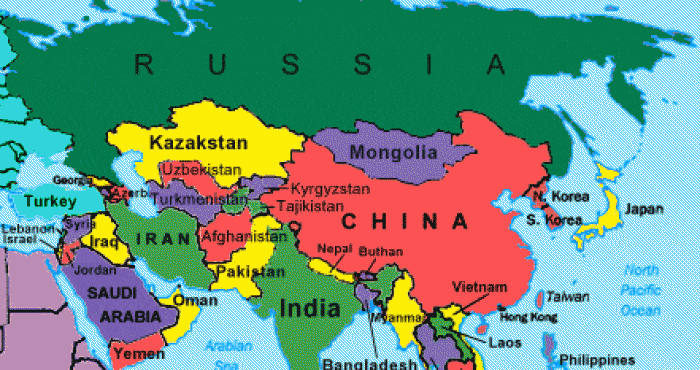
Ghost of Halford John Mackinder, meet your modern followers, the Dictators’ Internationale:
Springtime for Strongmen: The world’s authoritarians are on the march — and the West helped pave the way. The year 2018 was springtime for strongmen everywhere. It was the year Xi Jinping put an end to collective leadership in China, made himself president for life, and put a final nail in the coffin of U.S. Sinologists’ credibility as predictors of Chinese behavior. (They’ve been prophesying liberalization for decades.)…
Other strongmen named:
North Korea’s Kim Jong Un…[Nicaragua’s] Daniel Ortega…[Venezuela’s] Nicolás Maduro…Turkey’s Recep Tayyip Erdogan…Saudi Crown Prince Mohammed bin Salman…[Russia’s] Putin.
Thus Robert Kagan in Foreign Policy. But there’s more to worry about than the proliferating of non-democratic polities. The dictators are in military alliance against the US and its allies, are well armed, and control some very important territory.
In 1904 Halford John Mackinder submitted to the Royal Geographic Society an essay, “The Geographical Pivot of History,” that subsequently became both famous and influential. Mackinder summarized his thesis in 1919 as follows:
Who rules East Europe commands the Heartland;
who rules the Heartland commands the World-Island;
who rules the World-Island commands the world.
The World-Island was Mackinder’s term for the three connected continents of Europe, Asia, and Africa and their enormous wealth in minerals and population. The US, Great Britain, Canada, Japan, Australia, New Zealand, and Latin America fell basically into his “Everything Else” category, the periphery. The US and Great Britain had to prevent the Heartland from controlling the World-Island and its resources, Mackinder wrote.
An expanded ocean-to-ocean Heartland
While for Mackinder the Heartland was Russia and land-based, we’d now update his theory to say that the new Heartland is the China-Russian alliance, along with its subordinate allies and proxies Turkey, Syria, Iran, Pakistan, and North Korea. And it’s not just land-based. China is growing a navy to control the sea lanes around the Heartland — which it calls its New Silk Road — and Russia is expanding its naval control over and under the polar ice cap.
President Trump had hoped to draw Russia away from its alliance with China, but that now looks like a forlorn hope.

The Heartland doesn’t fully control the World-Island yet — India, for example, remains a holdout — but this new Axis is consolidating rapidly. Russian influence is spreading throughout the Mideast while Chinese influence radiates down toward Singapore and into the Indian Ocean, eastward into Micronesia, and westward into Africa and up to the Red Sea.
Both Russia and China have advanced nuclear missile, anti-satellite, and cyber warfare capabilities that the Western alliance is presently incapable of thwarting. These capabilities could wipe out the US or deter the US from defending its allies until it has none.
These developments have not gone unnoticed in Western strategic circles. But it would not do to say that the “holiday from history” that characterized US foreign policy in the 1990s is over yet. While it is true that the Trump administration seems determined to dump the bad or obsolete investments of the past (Afghanistan, Iraq, a Germany and Turkey-weakened NATO), it doesn’t seem to grasp how serious a threat the “Dictators’ Alliance” constitutes to the US and the West.
The US and the Western democracies — in which we include Japan and India — are disunited, without unified strategy, and helplessly watching the loss of atolls, Sri Lanka, Crimea, the Donbass.
Instead of realizing that the seriousness of the situation requires coalition building, the Trump administration is antagonizing its allies by its protectionist “like it or stuff it” trade policy towards these allies. Instead, they need to be brought together in a joint effort to militarily contain China and Russia and weaken China’s statist trade policies.
A hostile China needs to be surrounded by nuclear-capable US allies
Japan and Australia are key to containing China in the Pacific. Since China refuses to rein in the intercontinental missile and nuclear programs of its North Korean proxy, both Japan and Australia should move forward with their own nuclear weapons and ballistic missile programs. So should Taiwan and South Korea. It’s long past time for the US to cease telling its Pacific allies to forgo such basic self-defense measures. Only with nuclear weapons and missiles that can deter China can these four countries insure their national security and hold China in check until its urban middle class and oppressed rural population overthrow Xi Jinping and his Communist party cronies.
On the trade front, the US should rejoin the Trans-Pacific Partnership as quickly as possible. President Trump should also realize that he is not going to wean India from its Non-Aligned hankerings by waging a trade war against it in the midst of an important election campaign.
Given the treaties that Russian president Putin has broken — especially with the Ukraine — the US should no longer feel obligated to keep former President Kennedy’s unfortunate promise to Khrushchev that the US would not work to overthrow the Cuban Communist regime. That regime has been causing misery and death throughout Latin America, most notably through its active support for the Maduro regime. The US needs to tell the Cubans in Venezuela to get out and go home lest they end up hanging from Caracas’ light-less lamp posts.
But the major action remains in the Chinese-Russian “Heartland” alliance and its threatened domination of Europe, Asia, and Africa. We are in for a new Cold War. We won the last one only by unifying the democratic world, adopting wise policies, and persisting. That needs to be revived again, with appropriate adaptations to the new conditions.
Hat tip: Presstv.com

Leave a Reply